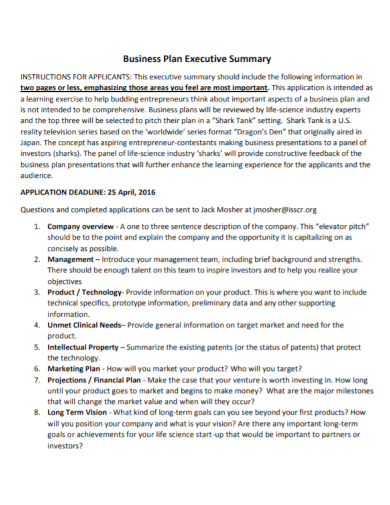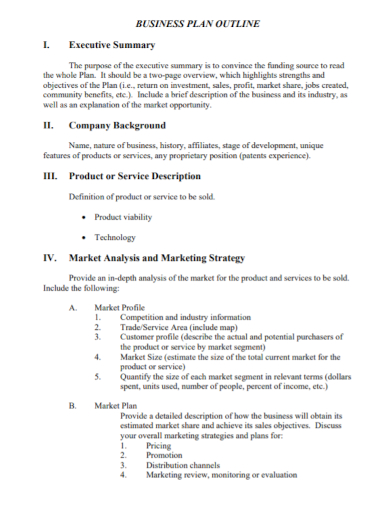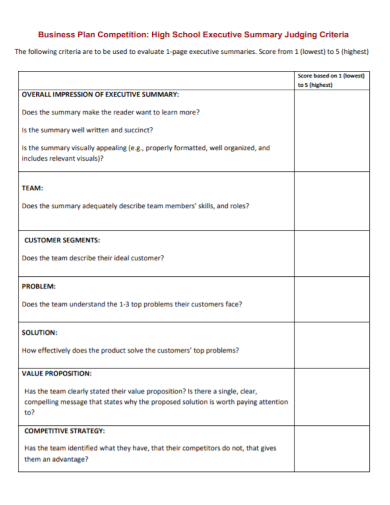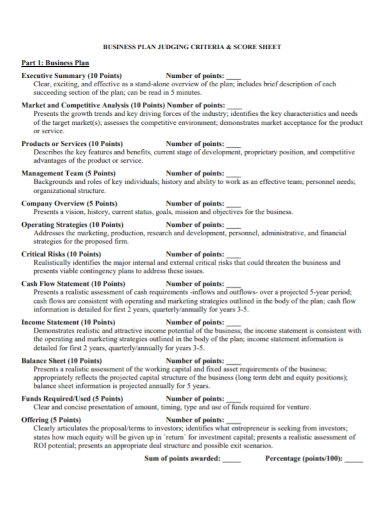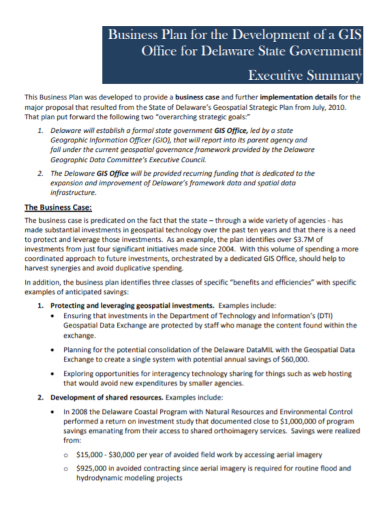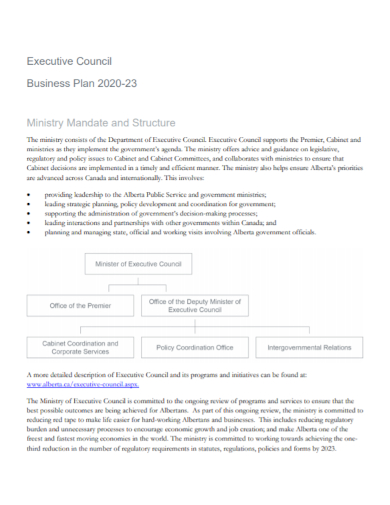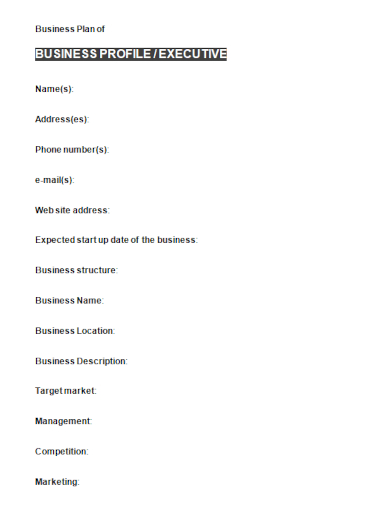Plans are often are drafted when we express an intent of wanting to achieve something. These are in a form of a diagram or list of steps with details of timing and resources, used to achieve an objective or to do something. Examples of these are travel itinerary plans, lesson plans, school strategic plans and career development plans among other things. All these pertaining to a common goal related to its subject matter. In a business setting these are called executive business plans. To know more about these, check out below our different executive business plan samples:
10+ Executive Business Plan Samples
1. Business Execution Plan Template
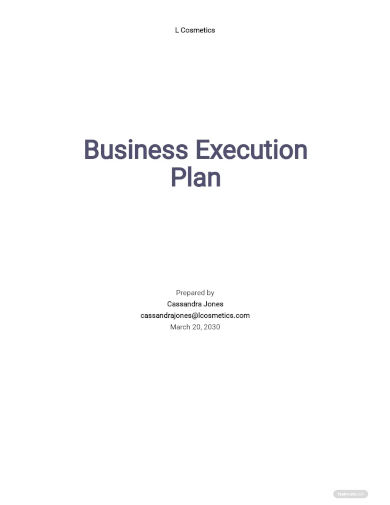
2. Executive Summary Startup Business Plan Template
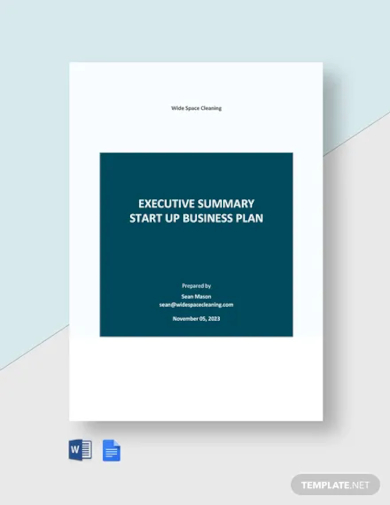
3. Executive Summary Financial Business Plan
4. Business Plan Executive Summary
5. Executive Summary Business Plan Outline
6. School Executive Business Plan
7. Executive Score Sheet Business Plan
8. Executive Business Plan Report
9. Executive Development Business Plan
10. Executive Council Business Plan
11. Executive Profile Business Plan
What Is an Executive Business Plan?
When a business is about to start up, business plans are written documents that outlines goals and objectives on how to accomplish these goals. There a big corporations which prepare annual business plans to serve as a guidelines to direct employees and the company what is set out for them on the in-coming year. Most of the times, business plans are updated to ensure that the goals and projected sales are in sync with the current market situation. In a way business plans can help management and employees prepare for sudden changes and find ways to work through them.
How to Formulate an Executive Business Plan?
Since business plans can be a critical driving force that steers a company to its target, it is equally important that the contents of an executive business plans must be comprehensive and must contain logical information. More or less, these plans should be also attainable with back up information to support it. Here is a step by step guide as you begin writing an business plan.
I. Executive Summary
To begin, formulate an overview of the contents of the business plan. These should more or less contain a brief description of the company itself, mission statement, business highlights, financial situation and target goals. Market your business properly and convince readers why they should choose your company.
II. Company Description
Although the company’s information has been already briefly introduced in the executive summary portion of the business plan, there should be a separate portion to be able divulge more detailed information about the business itself. Highlight how the company is different from the rest, list down how the company can be of service to others.
III. Analysis
One of the key factors of going into business is how to sell your product or service to the market. So market research and analysis plays an important role in business planning. Make this one of your business plan’s focal point by presenting different markets your company has decided to head on, know your competitors and what opportunities your business will take advantage of.
IV. Operational Structure
This contains the legal structure of the business, whether it is a Sole Proprietorship, General Partnership Limited Liability Company (LLC) or a Corporation. This will give readers an idea on how the company is being run.
V. Product or Service Description
A business could not be conceived without an idea of a product or service. It is the main purpose why companies exist, to bring products and services to the market. In this part of the business plan, it is time to discuss in detail what the company intends to sell or is offering. Differentiate it from other products or services in the market, list down the benefits it can give to customers and justify the cost and its pricing scheme.
VI. Marketing Strategy
This time around, you have the right product and services but how do you attract potential customers and clients? This comes with an effective service or product marketing and sales strategies. A number of successful product launch come with the best marketing strategy that can help capture a large market share.
VII. Financial Analysis
This portion of the business plans must include include income statements, balance sheets, and cash flow statements in the last three to five years and this can be used to compare the financial growth of the company and the projected return of investment. This is important especially as for some companies that need to request for a budget to be used during the in-coming year. Clearly state the logic behind your projections by providing all these as proof to support it.
VIII. Appendix
What goes here are other important and relevant information that is needed and applicable to the business plan.
FAQs
What Is a Value Proposition?
This refers to the value a company has promised to deliver to its customers should they decide to buy their product or use their services. It is a statement that summarizes why a customer would choose your product or service.
What Is Market Analysis?
A market analysis is the quantitative and qualitative assessment of a market. This dwells on the various customer segments and buying patterns, the competition, and the economic environment in terms of barriers to entry and regulation.
What Is the Difference between an Traditional Business Plan and a Lean Start up Plan?
A Traditional Business Plan contains comprehensive information, takes a lot of time to create and is normally presented in a stockholders meeting. While Lean Start Up Plan instead of elaborate planning, this format contains key elements and allows you to explain or start your business quickly.
For companies to productively want to hit their annual targets, a business plan is an effective way to start. Gather everyone who can help contribute to this strategic planning, brain storm and formulate all the gathered ideas into a summarized business plan report. As they say good results come from efficient planning.
Related Posts
FREE 13+ Sample Software Business Plan
FREE 13+ Sample Real Estate Business Plan
FREE 11+ Trucking Business Plan Templates
FREE 10+ Juice Bar Business Plan Templates
FREE 10+ Co-operative Business Plan Samples
FREE 10+ Sample Bar Business Plan
FREE 9+ Immigration Business Plan Samples
FREE 8+ Distributor Business Plan Samples
FREE 16+ Nonprofit Business Plan Samples
FREE 11+ Sample Film Business Plan
FREE 11+ Sample Executive Summary
FREE 10+ Sample Executive Summary
FREE 9+ Sample Business Plan Outline
FREE 6+ Sample Business Development Plan
Elements of a Business Plan


